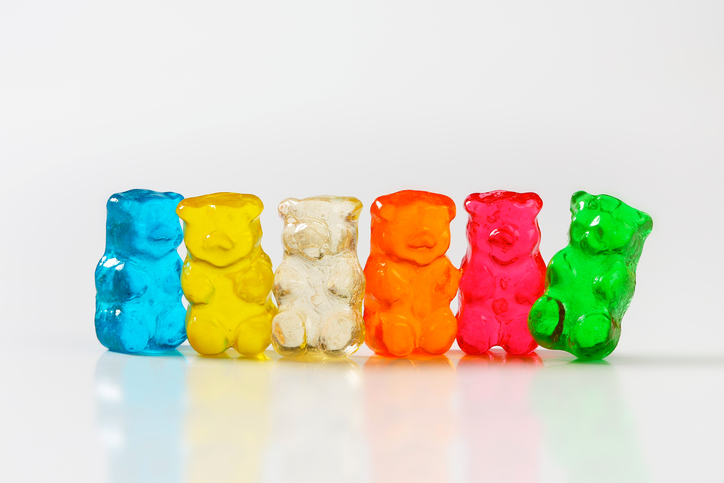Here’s the tale of how humans came to eat bears—tiny, adorable, rainbow-colored Gummy Bears, that is.
Origin story
Not too long after the end of World War I in the early 1920s, a 27-year-old candy factory worker from Bonn, Germany, named Hans Riegel decided to quit his job and go into business for himself. He set up shop in his kitchen, with little more than a marble slab, water kettle, and industrial-sized bags of sugar to make colorless (but extremely sweet) hard candies. He sold them to local candy shops and at street festivals, delivered by bicycle via Riegel’s business partner: his wife, Gertrud. They named their very small operation Haribo, taking the first two letters of Hans, Riegel, and Bonn.
Ho-hum hard candies
The ho-hum hard candies sold moderately well, but Riegel thought he could do better—both financially and creatively. Candy was (and is) big business in Germany, and he wanted to create a classic that would be famous all over the world. He took his inspiration from gummies, made from sugar, gelatin, and flavoring to make for a rubbery, chewy, super-sweet treat. Germans particularly ate up wine-flavored gummies and gumdrops, but Riegel thought they lacked a certain something—they were just boring, shaped like balls, lumps, or discs.
Dancing bears
Then Riegel remembered something from the many street festivals where he and his wife had sold their hard candies. Kids loved to watch the specially-trained dancing bears at those celebrations, and so Riegel took bears and married them to gummies. The result: bear-shaped chewy gummy candies he called Tanzbaren (which translates to “dancing bears”). That first iteration of gummy bears wouldn’t be recognizable to today’s candy fans: they were long and slim, not cute and squat, but they were cheap. (Cost: two for the equivalent of a penny.) Also different than today’s candy bears: They only came in gold.
War years
Still, it was the business and imaginative breakthrough Riegel was after. Within 10 years, Haribo employed 200 candy-makers to churn out Tanzbaren. By World War II, that number had doubled…until Germany’s obsession with world domination during the 1930s and 1940s hampered business, and Haribo had almost shuttered by the time Riegel died in 1945. Within five years, his sons got this more happier part of German history up and running again, and even bigger than before.
Gummibarchen aka ‘little gummy bears”
In 1960, Tanzbaren became available outside of Germany for the first time, and that’s also when the Riegels changed the shape to smaller gummy bears and labeled them Gummibarchen, which means “little gummy bears.” Multiple colors hit the worldwide market in 1967, finalizing the evolution of this very popular candy.









